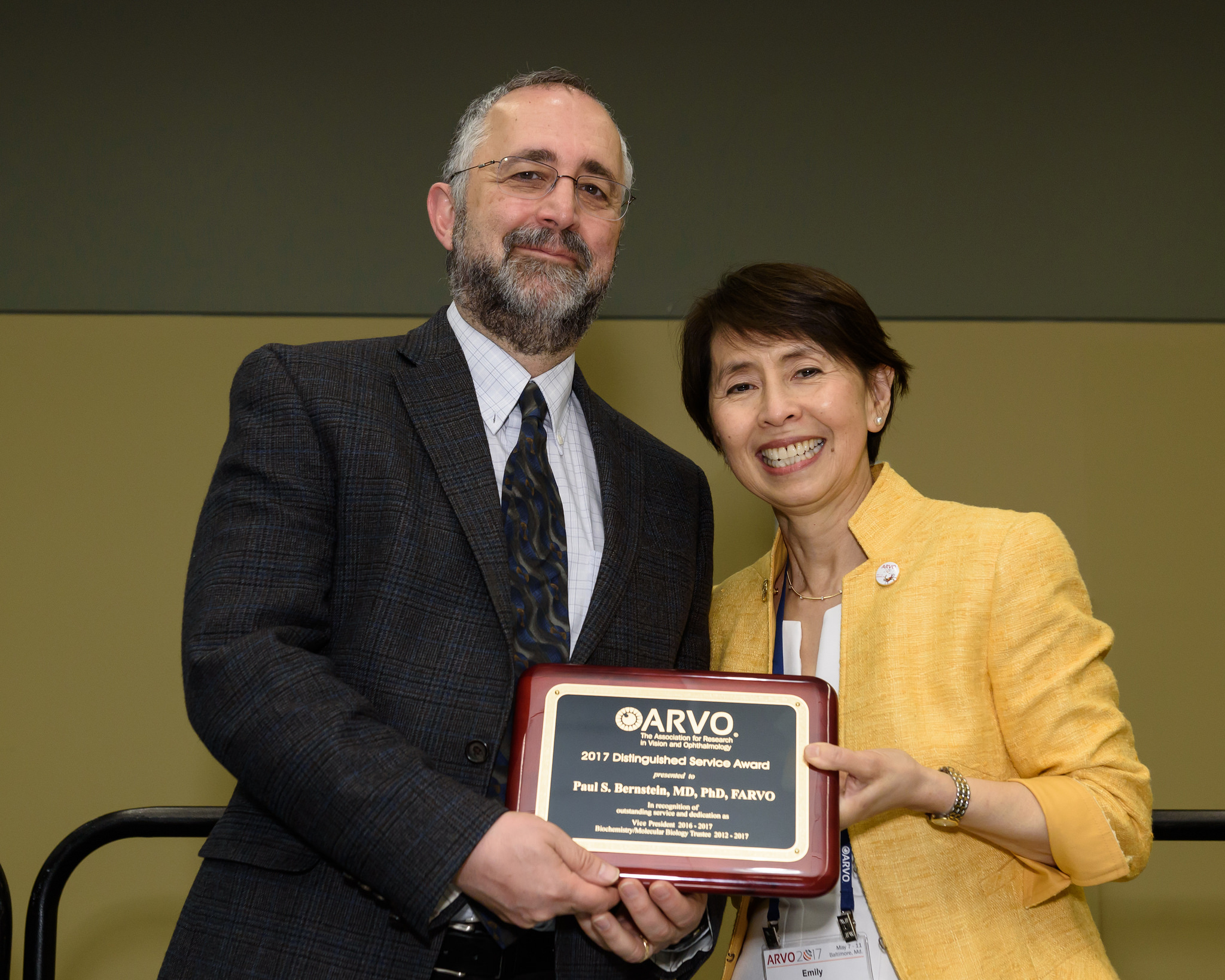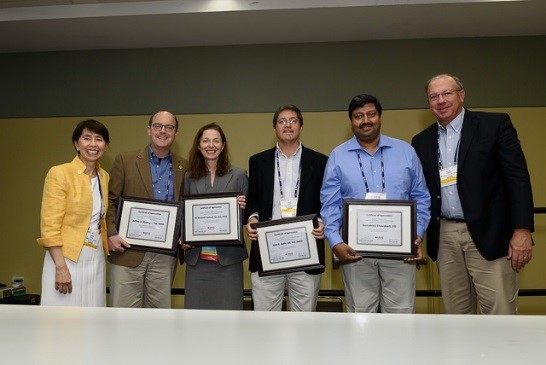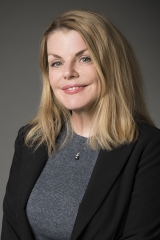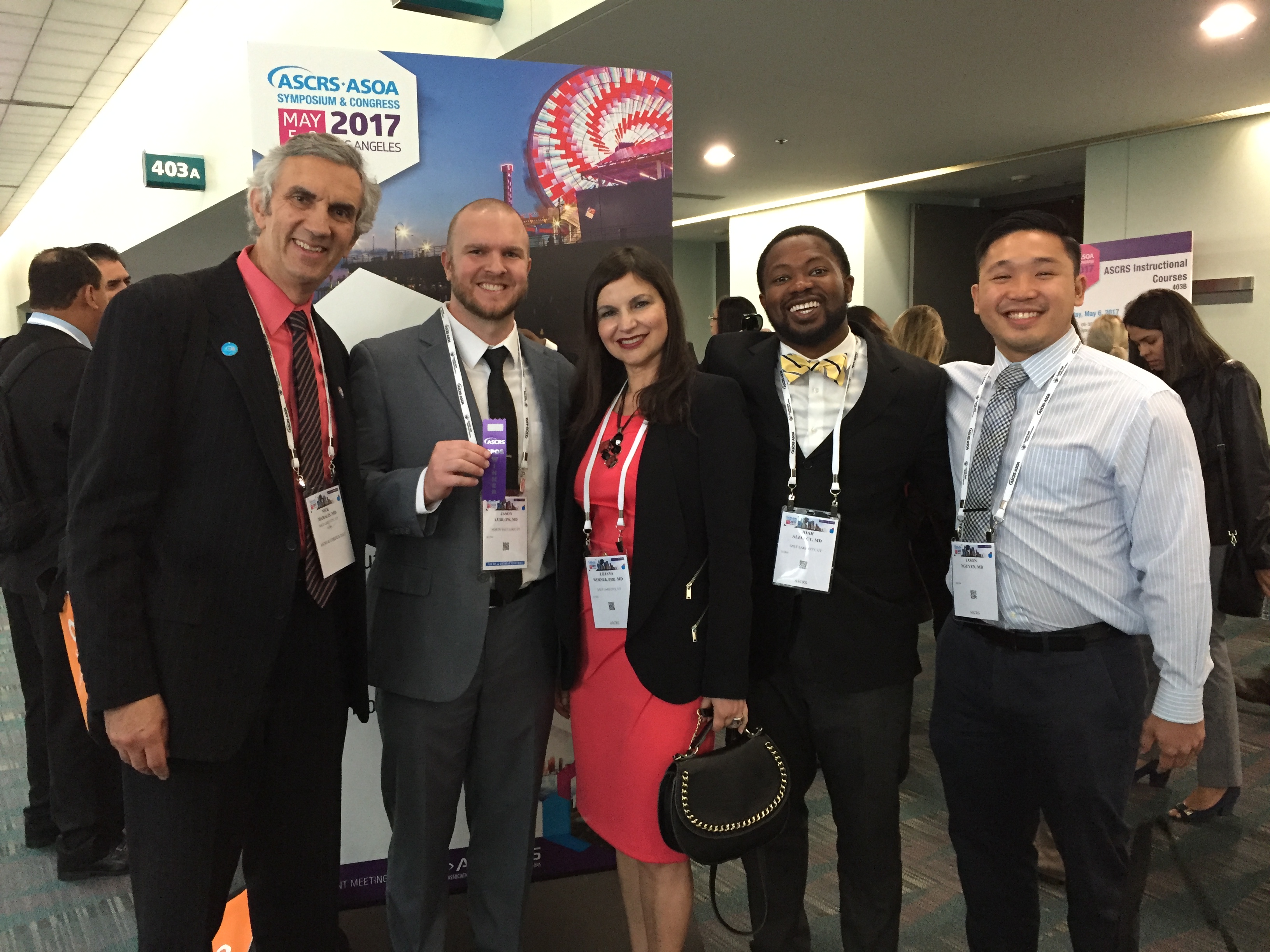 Two of the nation's top associations in the field of ophthalmology honored John A. Moran Eye Center physicians and researchers in May for their leadership and work in the field.
Two of the nation's top associations in the field of ophthalmology honored John A. Moran Eye Center physicians and researchers in May for their leadership and work in the field.
In Baltimore, the world's largest eye and vision research organization the Association for Research in Vision and Ophthalmology (ARVO) presented Paul S. Bernstein, MD, PhD, with its Distinguished Service Award. Bernstein recently completed a one-year term as ARVO's vice president and a five-year term as a biochemistry/molecular biology trustee.
During his tenure Bernstein worked to educate industry about what academia has to offer through partnerships, and to let young researchers know about opportunities in industry. Bernstein has several licensed patents and co-founded a company that developed the prototype that led to the Pharmanex BioPhotonic Scanner, used by supplement giant NuSkin to measure antioxidants in the skin.
The conference drew more than 11,000 researchers and clinicians and featured more than 6,000 unpublished research abstracts on topics ranging from the first robotic surgery performed inside a human eye to how gestational exposure to marijuana smoke impacts sight. Bernstein was struck by the volume of research on the role of genetics and genetic testing in eye disease.
"It's expanded enormously in my 23 years," he said. "There were just literally hundreds of posters on the role of genetics and genetically defining eye diseases. We still have a long way to go, but we are working on getting to treatments. Some of the first gene therapies will be possibly approved in the next year or two…that's what I find to be very exciting."
 ARVO recognized Mary Elizabeth Hartnett, MD, for developing the first specific international learning module on human subject research in ophthalmology. Hartnett was nominated by ARVO and then selected to be their representative for the American Academy of Ophthalmology Leadership Development Program, which identifies and develops future leaders of state, subspecialty and specialized interest societies, such as ARVO.
ARVO recognized Mary Elizabeth Hartnett, MD, for developing the first specific international learning module on human subject research in ophthalmology. Hartnett was nominated by ARVO and then selected to be their representative for the American Academy of Ophthalmology Leadership Development Program, which identifies and develops future leaders of state, subspecialty and specialized interest societies, such as ARVO.
Notable at ARVO, according to Hartnett: recent research into the role of epigenetics in eye diseases, such as diabetic retinopathy and age-related macular degeneration. Hartnett said the research "speaks to the importance of environmental risk factors that lead to regulation of genetics in chronic and age-related diseases."
 Moran's Margaret M. DeAngelis, Ph.D., was appointed to the ARVO Advocacy and Outreach Committee, where she will work to influence research policy and funding decisions globally, for a three-year term.
Moran's Margaret M. DeAngelis, Ph.D., was appointed to the ARVO Advocacy and Outreach Committee, where she will work to influence research policy and funding decisions globally, for a three-year term.
In Los Angeles at the American Society of Cataract and Refractive Surgery, attended by more than 6,000, Liliana Werner, MD, PhD, and Nick Mamalis, MD, received top awards.
Werner won the ASCRS Film Festival Award in the Instruments & Devices/Intraocular Lens Category. Established in 1982, the competition honors the best filmmakers in ophthalmology. Werner's winning film, Fun with Femtosecond Lasers: Episode II – Adjustment of IOL Power, featured a Star Wars opening theme and animations to showcase postoperative intraocular lens power adjustments.
 The Mamalis/Werner lab took first prize in the poster category with "Evaluation of the Biocompatibility of Intraocular Lens Power Adjustment Using a Femtosecond Laser," authored by Mamalis, Werner, Jason Nguyen, MD, Joah Aliancy, MD, Jason Ludlow, MD, Sean Enright, Ray K. Alley, and Ruth Sahler.
The Mamalis/Werner lab took first prize in the poster category with "Evaluation of the Biocompatibility of Intraocular Lens Power Adjustment Using a Femtosecond Laser," authored by Mamalis, Werner, Jason Nguyen, MD, Joah Aliancy, MD, Jason Ludlow, MD, Sean Enright, Ray K. Alley, and Ruth Sahler.
Two best paper of session awards also went to members of the lab:
- "Long-term Biocompatibility of a Modular Intraocular Lens System," authored by Ludlow, Nguyen, Aliancy, Bryan Masino, Larry Ha, Werner and Mamalis.
- "IOL Power Adjustment By a Femtosecond Laser: In Vitro Evaluation of Light Scattering, Light Transmission, and MTF," authored by Nguyen, Werner, Aliancy, Ludlow, Masino, Ha, Enright, Alley, Sahler, and Mamalis.
